When you are having a vacation in Laos, you will be amazed by their sophisticating weaving skill. In each market, it is not hard to encounter shops that offer you a wide range of colorful, refined silk from a traditional pattern to the modern one. These have contributed to the creation of Laos traditional dress and costumes (the “sinh” and the “salong”), a very special and unique costume reflecting Laotian custom. Let’s find out more about the origin and features of Laotian costume.
History of Laos Traditional Dress & Costumes
Since ancient times, in each village, the people of Laos have self-made cloth blankets. When they do not have dyes, they take fruits from the mountains to create color. The women in Laos like to wear cloth flowers, dark-colored fabrics, and fresh as the color of the natural leaves of the forest. However, the type of dress and the type of trousers also selected for convenience, suitable for the season with specific circumstances. Therefore, there are many clothes suitable for each activity such as festive costumes, labor costumes, funeral costumes, and wedding costumes, and so on.
The “sinh” has a long history in Laos. According to Ms. Kongdeuan Nettavong, a researcher who presented on the history of “sinh” at a seminar last year, she said that almost ethnic groups of Laos wear sinh and they each have their own styles of sinh. Laotian female is said to first put on the sinh about 3,000 years ago. Wearing a "sinh" has become a unique symbol that separates Laotian women from others.
Laos Traditional Costumes - The “Sinh” & The “Salong”
Laotian knows how to weave from a very early age since weaving is an essential skill for every woman to claim their artfulness. A good wife is considered to be the one who can weave well. Laotian traditional costumes for the woman is the “sinh” (English meaning clothes), but actually, it is a traditional tube skirt made of silk. If you have had a chance to visit Thailand or Cambodia, you will realize that the “Sinh” is a little bit similar to Thais or Cambodia's traditional skirt. It is understandable because they are three neighboring countries.
Sinh - Laos Traditional Dress for Female
“Sinh” consists of 3 main parts “hua sinh”, the waistband part; “phuen sinh” the body of the skirts which is usually empty and don’t have many decorations, and tin sinh, the lower border which contains golden decoration. When Laotian women wear “sinh”, on top they will have scarves with the same decoration crossing over their body.
Salong - Laos Traditional Dress for Male
“Salong” is the traditional costume for Laotian man. The big difference between “Salong” and “Sinh” is that it is a big pant or peasant pant.
Design of “Sing” & “Salong”
The sinh is a simple tube skirt that can identify the woman who wears it in a variety of ways. The sinh is made of silk (silk and cotton or cotton only) woven in exquisite motifs as well as delicate embroidery. They come in different textures and designs and are usually created in rural areas by ethnic groups… The sinh, woven with diverse motifs and colors, reflects the Laos culture, social relationships, and beliefs from the community to community and region to region.
A sinh consists of 3 different parts, the houa sinh (waistband), pheun sinh (body, main part) and the tdin sinh (hem).
The pheun sinh is the most important as well as the longest part at the center of the sinh. It needs different techniques to weave which take hours of labor to make a complete pheun sinh
There are both vertical and horizontal designs. Sinh with vertical patterns is mainly stitched to be made into a tube skirt with one seam. Sinhs with horizontal designs have to be stitched with two seams. There are some horizontal patterns that can be made into a sinh with only one seam. This is dependant on the design chosen or weaving techniques such as supplementary warp and a warp striped pattern.”
Sinhs have different names that relate to the weaving technique and design employed. The pheun sinh, the body, is the most important part of a sinh and very often the sinh gets its name from the specific techniques and designs used to create this part. For instance, there is sinh mii (sinh woven with ikat technique), sinh muk (sinh woven with supplementary warp technique), sinh chok (sinh woven with discontinuous supplementary weft technique, sinh mai kom (sinhs woven with twisted multiple silk yarn technique), sinh khan (sinhs with vertical striped design) and sinh kaan (sinhs with horizontal striped design).”
The word "salong" denotes a length of fabric (made of cotton, silk, or synthetic fibers such as rayon) that is worn by men. The traditional garment is generally four to five meters in width as well as length (from the knees to the ankles). Salongs are usually worn around the waist, but can also be tied in various methods. With regards to design, traditional salongs usually have varied, square, or checkered patterns and symbols and colors that are woven by means of traditional native weaving methods that go back many centuries. Over the years, more and more varied designs and images have been added to designs that include plants, animals, and cultural symbols. Salongs now also incorporate contemporary designs and patterns that keep pace with the times and the latest fashion styles. The combination of colors and designs that can be found on salongs is virtually limitless today.
Laos Traditional Dress & Costumes in Holidays & Festivals
Laotian traditional costume often wears an important occasion or ceremony and in many rural areas, you will easily catch a glimpse of children wearing “tube skirts” to school. Otherwise, “sinh” and “salong” are various in colors and depend on their occasions such as a wedding or funeral of the festival.
Laos Traditional Clothing in Wedding Ceremony
Wedding ceremony in Laos is an important occasion. The groom and the bride will wear traditional costumes with bright colors and gold details, which represents the propensity. The richer the family is, the more sophisticating the clothes are.
Laos Traditional Dress in Festival
Festival is a time when people join together and share happiness all around. Therefore, the custom is very colorful and in a bright color.
Other Facts about Laos Traditional Dress & Costumes
Nowadays, people in the capital or central places do not usually traditional clothes but it is a typical thing in Laos’ rural area. The high quality ”Sinh” or “Salong” is made of silk and is used in ceremony and festival. Meanwhile, the “sinh” which is worn everyday life in the rural area, is made of cotton weaving and cooler, more comfortable to carry out daily tasks.

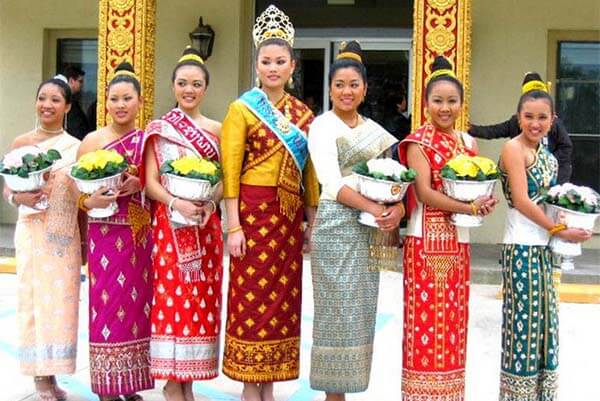
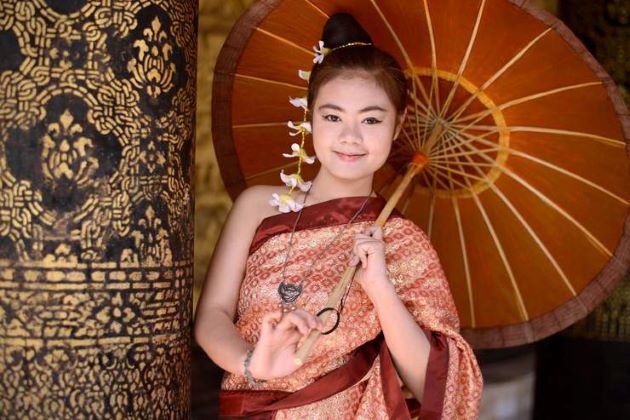
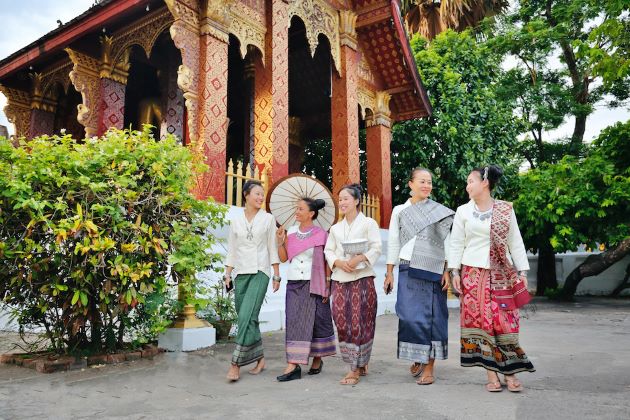
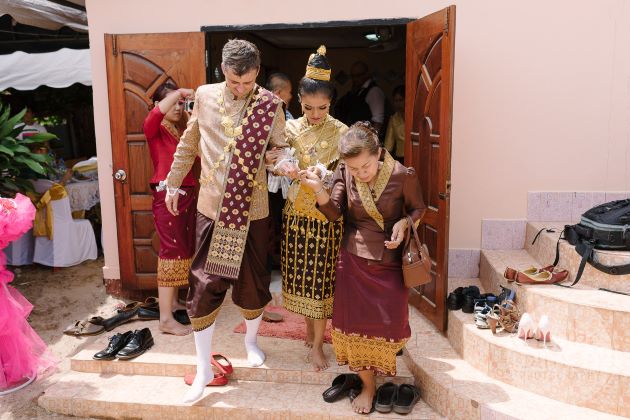
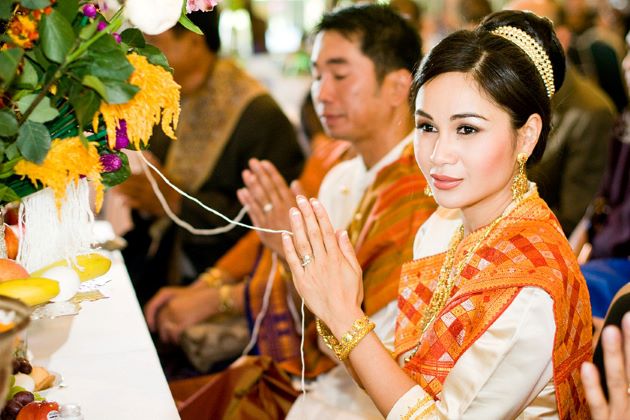
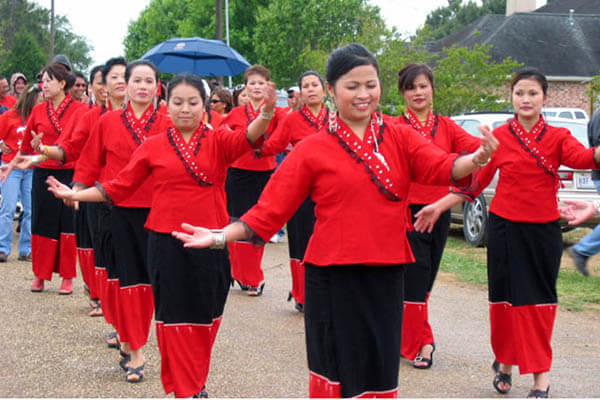

Are their comfortable to wear?
Sure Agnieska Isler,
The Lao people wear their traditional costumes in the most important days of there culture.
Hello I'm laotian born in America and I am in need in a traditional dress but can find a website. Do you know of any?
Hi Daezi,
We highly recommend the website of laoshouse for purchasing Laos traditional dress.
Hope you like it!
Best,
i have a project to do and i need to make my own sinh out of what i have so what should i do?
You 'd better find a local workshop to see what the locals do and performance then ask them for help.